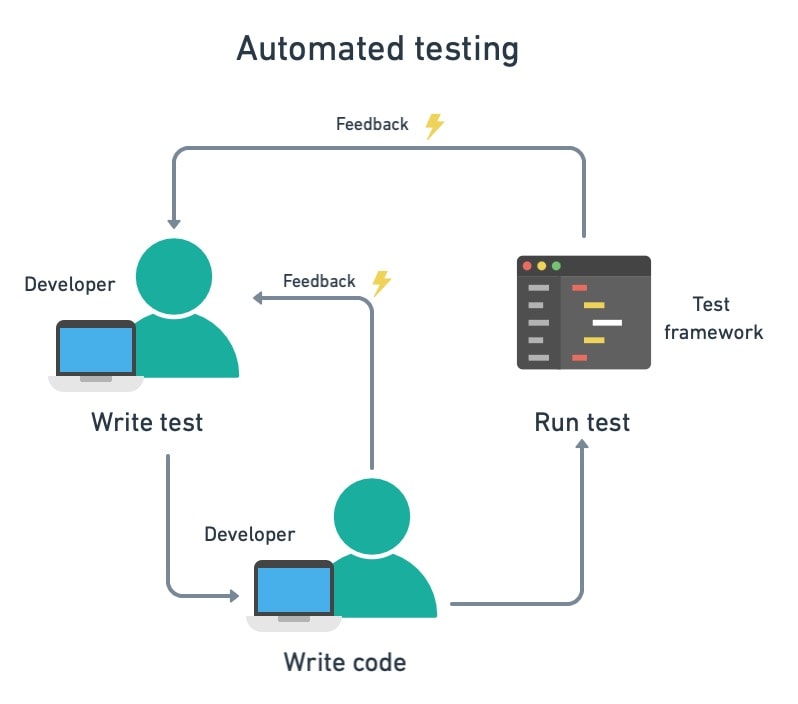Making Certain Success in Automation Evaluating: Trick Metrics, Challenges, and Solutions Every QA Group Ought To Know
In the world of software quality control, the landscape of automation testing is ever-evolving, requiring a meticulous technique to make sure seamless procedures. Trick metrics function as the compass leading QA teams with the large surface of examination automation, clarifying development and locations for enhancement. Obstacles loom huge, typically casting darkness on the course to success. By understanding these obstacles and carrying out reliable services, QA groups can browse via intricacies with skill. The journey to mastering automation testing is led with subtleties that require a keen eye for monitoring, analysis, and continuous enhancement. automation testing. As the market moves ahead, the mission for ideal efficiency in automation screening stays a consistent pursuit, urging QA teams to equip themselves with the knowledge and techniques necessary for accomplishment.
Importance of Trick Metrics
Comprehending the significance of essential metrics is vital for examining the performance and effectiveness of automation screening processes. Trick metrics function as quantifiable procedures that provide beneficial insights into different aspects of the screening process, such as examination protection, examination implementation time, defect thickness, and test instance efficiency. By examining these metrics, QA groups can identify traffic jams, ineffectiveness, and locations for enhancement within their automation testing structure.
One critical element of key metrics is their capacity to track progress and check the overall wellness of the testing process (automation testing). They make it possible for stakeholders to make educated decisions based upon data-driven understandings, which can result in extra efficient testing strategies and far better resource allowance. Additionally, essential metrics can aid teams set realistic objectives, gauge the success of automation initiatives, and demonstrate the ROI of automation screening efforts

Common Obstacles Encountered
Challenges generally come across in automation screening procedures can substantially impact the total effectiveness and effectiveness of QA groups. Automation screening may not cover all aspects of testing, such as use and individual experience screening, which still require hand-operated treatment. Conquering these difficulties calls for correct planning, strategic examination instance selection, durable upkeep processes, adequate sources, and a clear understanding of the constraints of automation screening.
Reliable Solutions for Challenges
To deal with the obstacles encountered in automation testing, executing efficient remedies is crucial for improving the performance and performance of QA teams. One crucial solution is to buy durable training programs for QA groups to guarantee they have the required skills to effectively make use of automation tools. Training can link expertise voids, enhance understanding of automation structures, and enhance scripting abilities, ultimately causing much more reliable test development and execution.
An additional important remedy is to establish clear communication networks within the QA team and with other stakeholders, such as programmers and job managers. Effective communication aids in aligning assumptions, sharing progress updates, and promptly addressing issues or obstacles that might develop during the automation screening procedure.

Tracking and Analysis Techniques
Carrying out effective tracking and analysis methods is essential for guaranteeing the success and performance of automation testing procedures. By using tracking tools, QA teams can track the efficiency of examination manuscripts, recognize traffic jams, and determine areas for enhancement. Real-time surveillance enables quick discovery of issues, making it possible for fast action and resolution. Additionally, evaluating test outcomes and metrics supplies useful understandings into the high quality of the software application being examined and the efficiency of the testing approach.
One trick strategy in monitoring and evaluation is using dashboards that consolidate relevant metrics and KPIs in an aesthetically easily accessible style. These dashboards supply a thorough introduction of test execution condition, examination insurance coverage, flaw patterns, and other critical information. Frequently evaluating and analyzing these this contact form control panels can help QA groups make informed decisions, prioritize jobs, and optimize screening efforts.
Moreover, implementing automated alerts and alerts based upon predefined limits can enhance proactive tracking and timely intervention. By setting up signals for efficiency inconsistencies or examination failures, teams can deal with concerns without delay and prevent them from intensifying. Generally, tracking and evaluation techniques play a vital duty in ensuring the performance and success of automation screening initiatives.
Continual Enhancement Strategies
Enhancing the effectiveness of automation screening procedures demands the regular refinement of methods and strategies. One essential strategy to boosting automation testing processes is to carry out regular reviews and retrospectives.

Conclusion
Finally, it is critical for QA teams to recognize the crucial metrics, challenges, and services in automation testing to make certain success. By very carefully checking and examining information, carrying out effective options to common obstacles, and continually improving approaches, QA teams can maximize their testing procedures and deliver top notch software. Sticking to these methods will inevitably result in extra efficient and reliable automation screening practices.
By examining these metrics, QA groups can determine traffic jams, inefficiencies, and locations for renovation within their automation testing structure.
In addition, essential metrics can assist groups established realistic objectives, measure the success of automation campaigns, and show the ROI of automation testing efforts.
Difficulties generally encountered in automation testing procedures can significantly impact the general effectiveness and efficiency of QA groups. Automation screening might not cover all facets of screening, such as functionality and customer experience screening, which still require manual intervention.In conclusion, it is vital for QA groups to recognize the vital metrics, obstacles, and options in automation screening to make certain success.